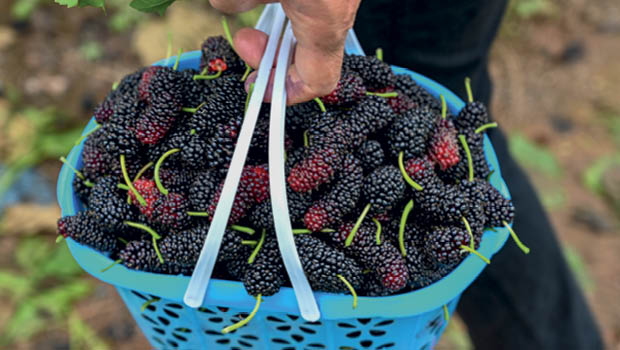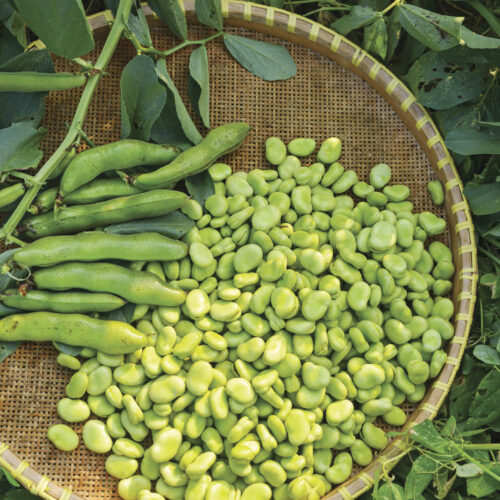Mighty mulberries
2021-07-22T06:43:51+10:00
From an early age, Paul West fell in love with the resilient mulberry and its bountiful, juicy and tangy fruit.
I have vivid memories of our first harvest of the mulberry, the tree was about 2m tall, thin and had a couple of dozen dark mulberries scattered around its branches. My little sister and I fell greedily upon them, stuffing our faces and staining our clothes, hands and chins. It was pure bliss and a story that I’ve shared here today to show two qualities that mulberries are renowned for: resilience and their ability to bring joy to young people.
Mulberry trees are fast growing, suitable for all but the most tropical of climates, make a great summer shade tree, are relatively free from pests and diseases and, once mature, provide you (and the local bird life) with bucket loads of sweet and tangy mulberries.
So if you’re after a low-maintenance, high-return, and long-lived fruit tree with nutritious berries, it’s time you cast your gaze upon the mighty mulberry.
Sun, water and space
Standard mulberries are capable of growing to beyond 10m tall and spreading to 20m wide if left to their own devices, so if you want a big tree, then you need an appropriately big space to grow it. Alternatively, the tree can be pruned to a more manageable size (2m x 2m) and grown in a small backyard, even in large pots.
The mulberry is frost hardy and is adaptable to most soil conditions, though it is prone to drying out and dropping fruit in very light and sandy soils. If that’s your soil type, make sure you keep the water up to it over summer.
Choose a position that receives full sun and is sheltered from salty winds if you’re on the coast. Like most edible plants, mulberries will benefit from soil that has been enriched with rotted manure, worm castings or compost, though will still manage to grow and fruit in poor soils. You’ll also need to choose a spot where the staining fruit won’t cause trouble, such as in the middle of the lawn or over the chook pen. Avoid planting them next to a deck, paving or worse – the clothesline!
Planting and care
Once you’ve identified a suitable location for your mulberry, dig a hole at least twice the volume of the potted plant and enrich the soil with compost, worm castings or well-rotted manure before planting.
Stake your mulberry for the first year or so to protect it from wind damage and make sure you give it a good water every week during summer until it has fully established, after which it will be much more hardy. Mulch around the base of the tree to retain moisture, and give it a feed every springtime by scattering some organic fertiliser around the drip line.
Being such a vigorous plant, left to their own devices, mulberries will grow into a large tree quickly, taking over your backyard and making the fruit difficult to harvest. If you have the space and don’t mind, then leave it up to its own devices, but if you’d like to keep the tree to a manageable size, give it a hard prune to a harvestable height every winter (when all the leaves have fallen off).
For larger trees that have also been grown for shade purposes, prune low-hanging branches so that you can sit or slumber under the canopy during summer – just don’t go wearing any white linen while the fruit are ripe!
Harvest tips
Depending on your climate, mulberries will begin to ripen anywhere from mid-spring to late-summer. The fruit will not ripen any further off the tree, so wait until they are spot on and then tuck in! You won’t be alone in anticipating the ripening of the fruit, though, with every bird in the neighbourhood counting down the days until that fruit is ripe! If you have a big tree, there should be plenty for all, but if a tree is smaller, use wildlife-friendly netting to protect the fruit.
Paul West’s article first appeared in OG Issue 126, which also included tips for planting peas and bringing up chooks in an inner-city backyard. So much to read and do! You can still get a copy here.







